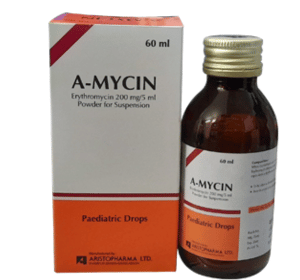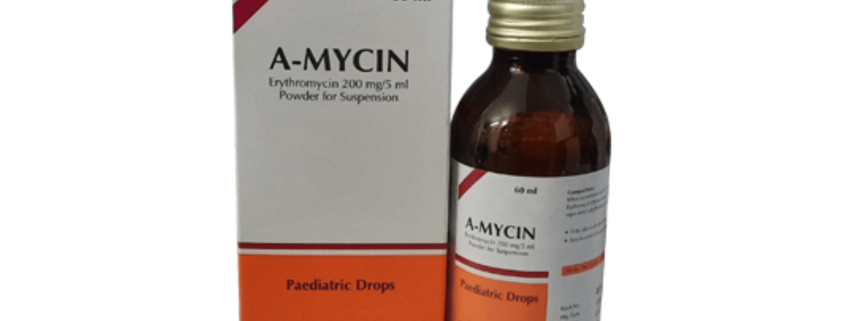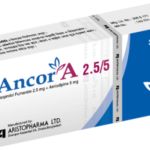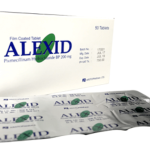A-Mycin (Erythromycin)
Therapeutic Group : Antibiotic

Presentation:
A-Mycin Powder for Suspension: After reconstitution each 5 ml suspension contains Erythromycin Ethylsuccinate USP equivalent to 125 mg of Erythromycin..
A-Mycin Paediatric Drops: After reconstitution each 5 ml suspension contains Erythromycin Ethylsuccinate USP equivalent to 200 mg of Erythromycin.
Indications:
A-Mycin is highly effective in the treatment of a wide variety of clinical infections, such as
1.Upper respiratory tract infections: Tonsillitis, peritonsillar abscess, pharyngitis, laryngitis, sinusitis, and secondary infections in cold and influenza.
2.Lower respiratory tract infections: Tracheitis, acute and chronic bronchitis. Mycoplasma pneumoniae (lobar pneumonia, broncho pneumonia, primary atypical pneumoniae), bronchiectasis.
3.Skin and soft tissue infections: Boils and carbuncles, paronychia, abscesses, pustular acne, impetigo, cellulitis, furuncolosis, erythrasma.
4.Veneral infections: Non-specific urethritis, syphilis (if the patient is allergic to penicillin).
5.Gastro-intestinal infections: Cholecystitis, Staphylococcal enterocolitis, infectious diarrhoea, & cholera.
6.Ear and oral infections: 0titis media and otitis externa, gingivitis, dental abscesses.
7.Prophylaxis: Pre-operative and post-operative, trauma, burns, rheumatic fever.
8.Other infections: Diphtheria, whooping cough.
Dosage & Administration:
Adults: Usually 250 mg every 6 hours, or 500 mg every 12 hours. May increase up to 4 g/day, according to severity of infection.
| Infections | Dosage and Administration |
|---|---|
| Upper respiratory tract infections of mild to moderate severity | 250 to 500 mg 4 times a day for 10 days |
| Lower respiratory infections of mild to moderate severity | 250 to 500 mg 4 times a day for 10 days |
| Respiratory tract infections due to Mycoplasma pneumoniae | 500 mg 6 hours for 5 to 10 days, treat severe infections for up to 3 weeks |
| Skin and soft tissue infections of mild to moderate severity | 250 to 500 mg 4 times a day for 10 days |
| Pelvic inflammatory diseases (PID), acute due to Neisseria gonorrhoeae | 500 mg 4 times a day for 10 to 14 days |
| Urogenital infection during pregnancy caused by Chlamydia trachomatis | 500 mg 4 times daily for 7 days or 250 mg 4 times daily for 14 days |
| Urethral, endocervical or rectal infections, uncomplicated | 500 mg 4 times daily for 7 days or 250 mg 4 times daily for 14 days |
| Non-gonococcal urethritis | 500 mg 4 times daily for at least 7 days |
| Neisseria gonorrhoeae: Uncomplicated urethral, endocervical or rectal infections and in penicillinase producing N. gonorrhoeae(PPNG) | 500 mg 4 times a day for 7 days |
| Early syphillis (primary, secondary or latent syphillis of < 1 year duration) | 500 mg 4 times a day for 14 days |
| Severe or chronic diarrhoea | 500 mg 4 times a day for 7 days |
| Rheumatic fever | 250 mg 2 times daily |
| Bacterial endocarditis | 1 g 2 hours prior to procedures, then 500 mg 6 hours after initial dose |
| Acne | 500 mg twice daily for 3 months reduced to 250 mg twice for 3 months |
Children:
The usual oral dose is 30-50 mg/kg body weight per day in divided doses. For more severe infections, the dose may be doubled.
Contrainidications:
Erythromycin is contraindicated in patients with known hypersensitivity of this antibiotic.
Warning & Precautions:
Erythromycin should be used with care in patients with existing hepatic impairment. It has been suggested that Erythromycin should be used with care in patients with history of arrhythmia.
Side effects:
Gastro-intestinal: Abdominal cramp & discomfort, nausea, vomiting & diarrhoea. Hypersensitivity reaction may also be responsible for the hepatotoxicity sometimes in patients receiving Erythromycin or its derivatives.
Drug interaction:
A-Mycin (Erythromycin) may decrease the clearance of theophylline causing increased theophylline serum level and potential toxicity. It may decrease the metabolism of carbamazepine, triazolam, hexobarbital and phenytoin causing increased serum levels and potential toxicity. A-Mycin (Erythromycin) may decrease the clearance of warfarin and thus potentiate the hypoprothrombinic effect of warfarin.
Use in special groups:
Use in pregnancy: A-Mycin (Erythromycin) crosses the placenta. Fetal plasma concentrations are variously stated to the 5 to 20% of these in the mother.
Use in lactation: It is readily excreted in breast milk.
Packing:
A-Mycin Powder for Suspension: Bottle containing dry powder for reconstitution of 100 ml suspension.
A-Mycin Paediatric Drops: Bottle containing dry powder for reconstitution of 60 ml suspension with dropper.



